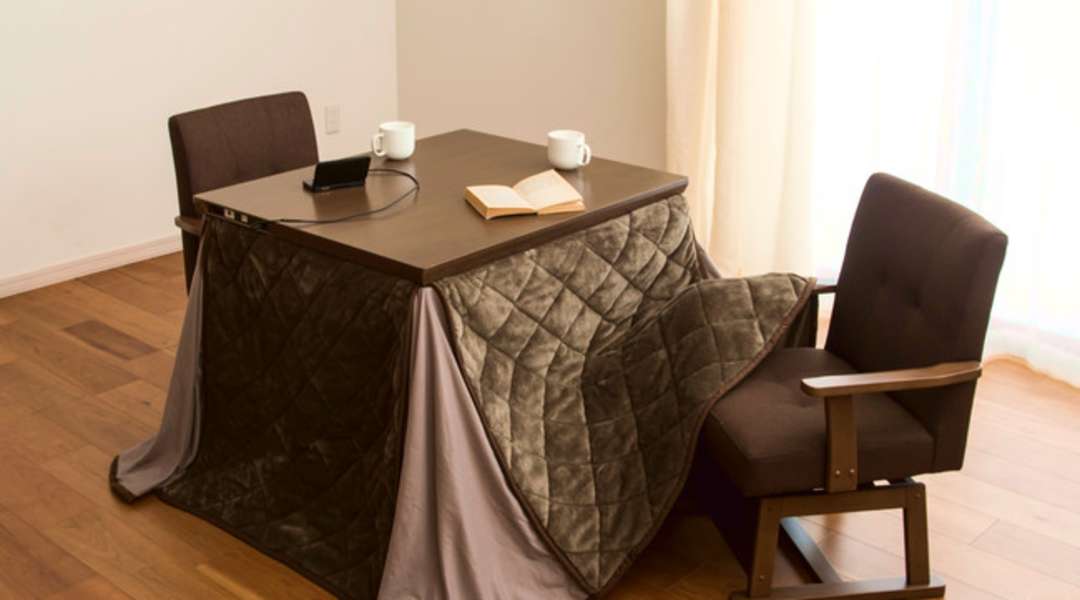
What is fluffy, snugly and makes you feel warm and happy all over?
No, we're not talking about Love, the Station Master Cat at Ashinomaki Onsen.
It is, of course, the genius Japanese invention of the 'kotatsu' - the subject of today's love letter!
The word 'kotatsu' actually consists of the word 'ko' meaning fire or torch, and 'tatsu' meaning foot warmer (yes, Japanese has a word for that), and is essentially a quilted, heated table that adds a little bit of luxurious comfort to so many gorgeous winter settings (but we'll get onto how you can get your kotatsu kicks, in just a second...)
It originated in the 14th century and started as a sociable way to sit around the sunken hearth of the Japanese home, also known as 'irori' - a pit dug into the ground where a fire was made with a cast-iron kettle hanging down from the ceiling above it.
Gradually, footspace began to be dug out around this, with a wooden plinth placed above the hearth and then a blanket stretched across that, so that the heat was trapped in and people sitting on the bank around the hearth could keep their feet warm.
By the 20th century, this had shifted from traditional coal fires to electric heating, which we now see in the kotatsu of today.
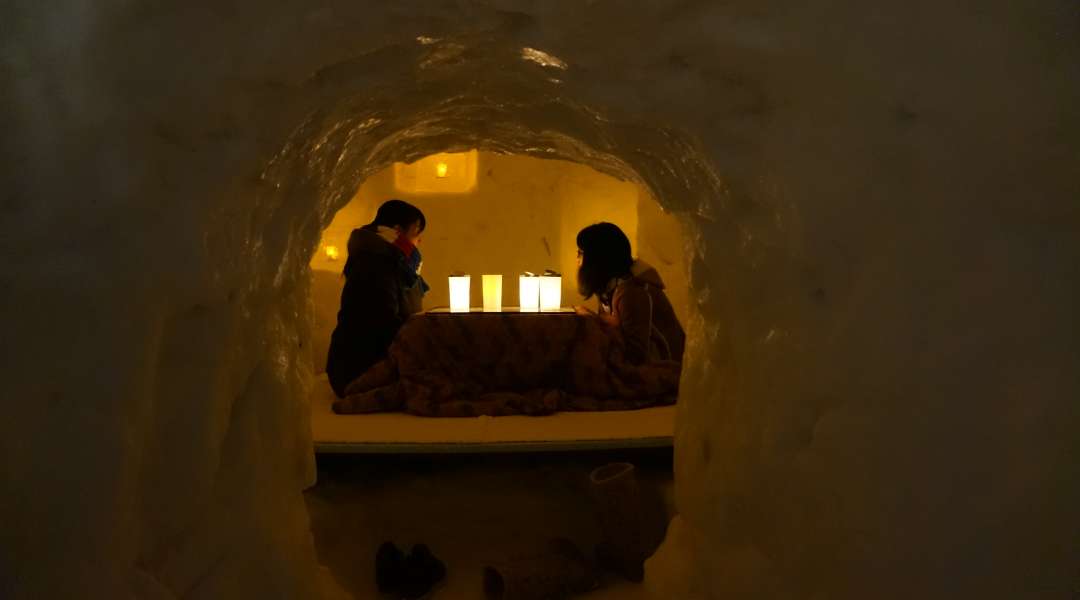
(kotatsu being used inside a 'kamakura' igloo at a winter festival)
Simple though it may seem, it's a staple of Japanese life, especially when it comes to not just surviving, but thriving throughout Japan's crisp autumn and winter months from the end of October through to the beginning of March.
Japan knows that pretty much any situation can be made better with access to one of these bad boys but they've been hitting the headlines recently with how they're revolutionising Japan's work from home system. Japan is traditionally not a work from home country, so houses aren't naturally set up for it. Private residences will often not have central heating in the way we do, and tend to rely on heaters and air conditioning units.
With new numbers of people spending the working day at home in houses that are difficult to heat thoroughly throughout the entire day, the incoming cold has been one of the worries as we head into autumn.
ENTER, THE KOTATSU!
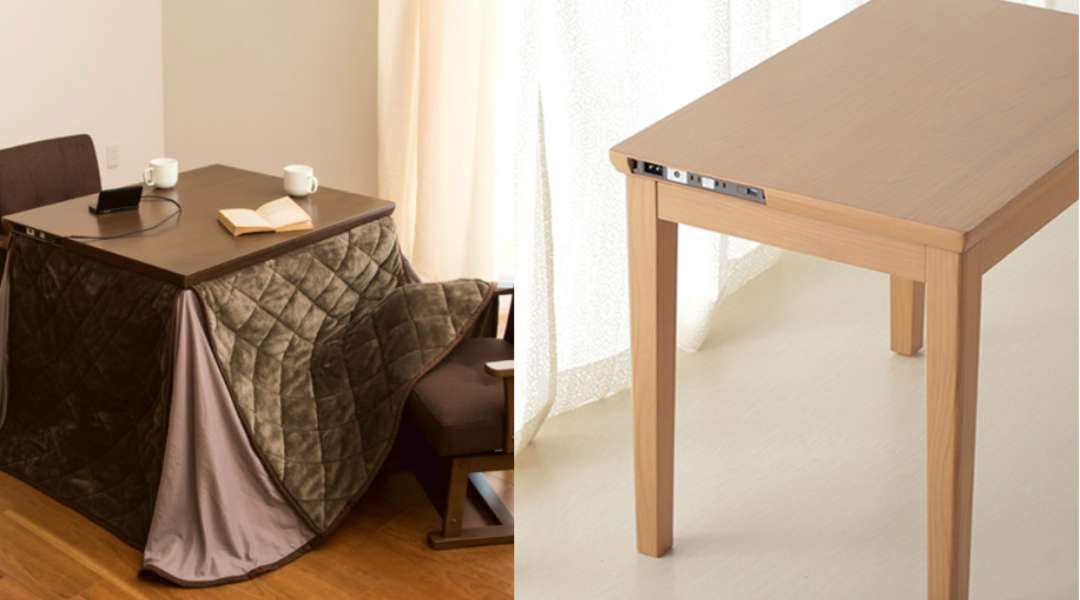
AEON, the Marks & Spencer of Japan, have stepped up to the plate to revamp this traditional method of keeping warm and adapting it to the needs of the modern day work from home-r with a new kotatsu set-up that works not only as a desk and a charging station, but as a cosy retreat, too.
The upshot is that many Japanese people can now get their work done at a desk, as if they were in the office, all the while indulging in a winter comfort under a velvety heated blanket.
Doesn't sound too bad to us!
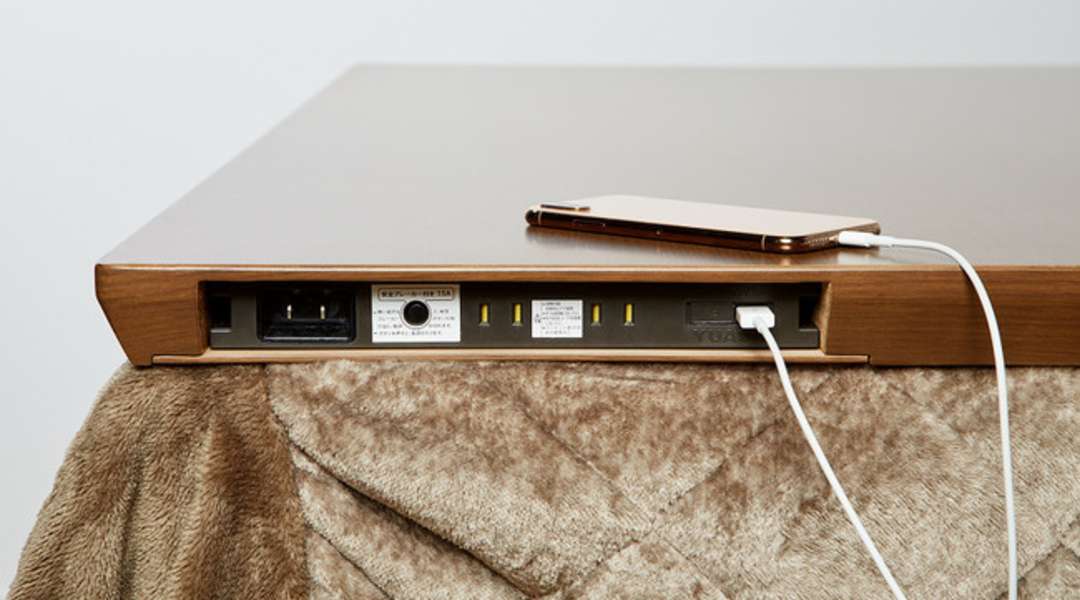
But where can the average Joe experience the delights of this unsung hero? Well, unsurprisingly, Japan has been getting creative...
SANRIKU KOTATSU TRAIN
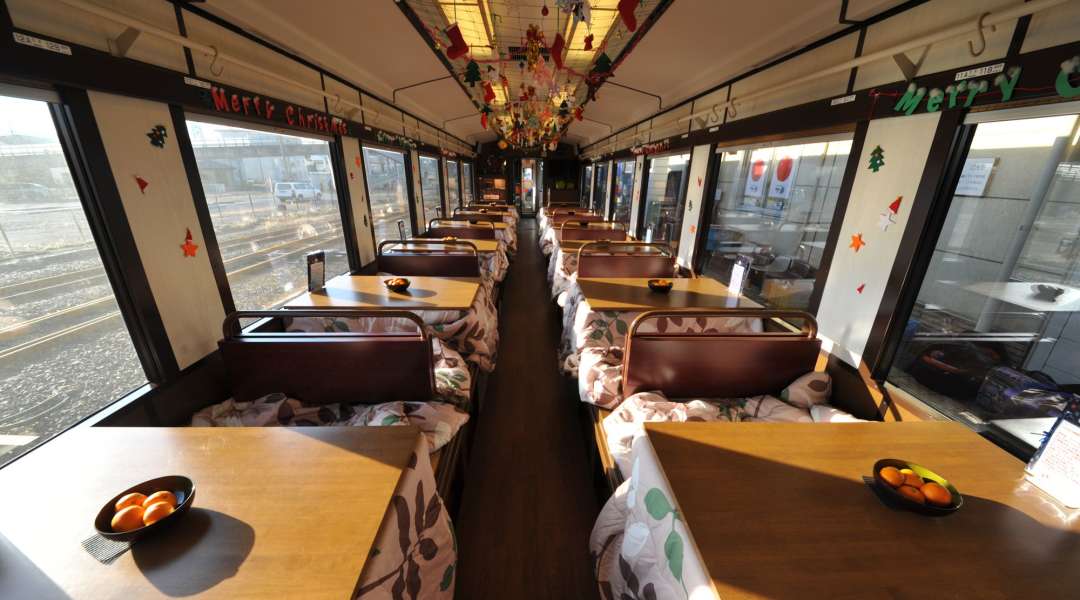
The northern Tohoku region is one of Japan's most rustic areas with oodles of natural beauty and in no place is this more true than along the rugged and stunning Pacific coastline. The Sanriku Kaigan coast features some of Japan's most eye-wateringly attractive vistas stretching from Iwate prefecture through to Miyagi prefecture and is all conveniently connected by the Sanriku line, running coastal services along the length of the region.
Come in winter, and you'll not only be treated to the clearest skies and the freshest of sake and seafood, but also the special edition kotatsu trains! Huddle under the warmth of the blanket with your nearest and dearest as you gaze out upon the crashing waves and dramatic cliffs rolling by outside the window. The trains also have 'irori' hearths built in to them and if you're lucky you might catch a traditional folklore dance performed within the carriage.
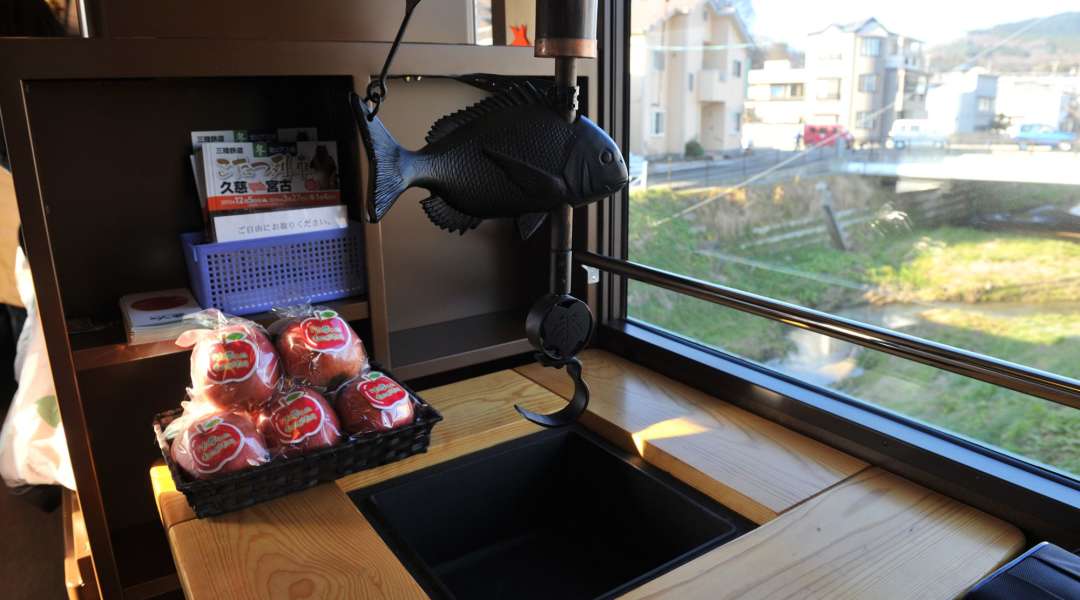
FESTIVAL KOTATSU
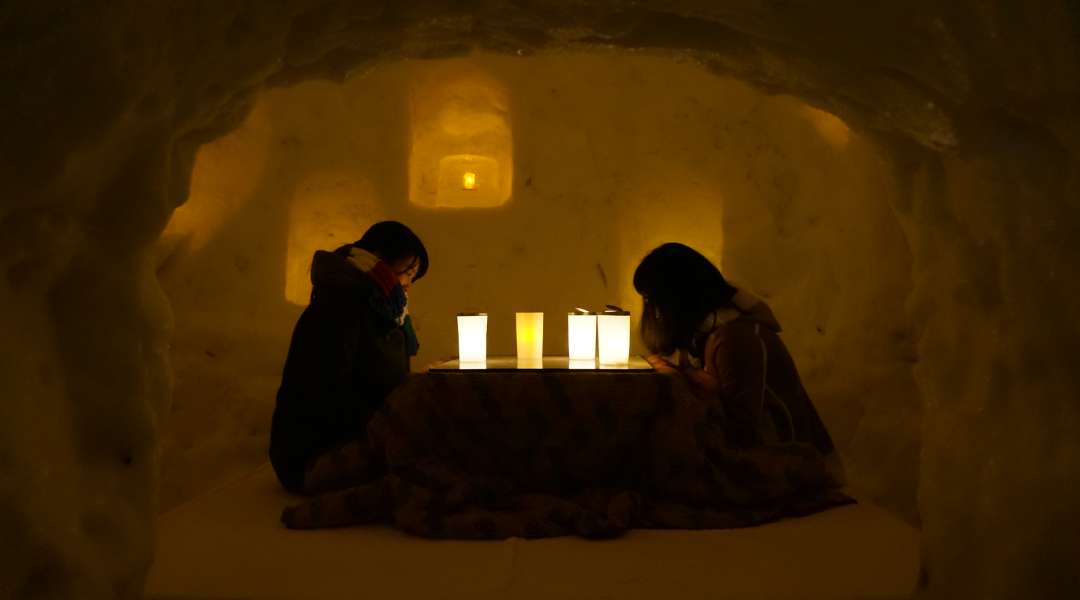
Though kotatsu are now being snapped up by work-from-home-rs who live alone, their founding principle is based in the idea of creating social spaces for people to come together during the darker months when people are less inclined to get out and about on the daily.
Just take a look at the number of festivals that they have been incorporated into.
The Nakao Kamakura Matsuri in the Oku-Hida snow country around Takayama is a prime example, where in the past kotatsu have been incorporated into the candle-lit 'kamakura' igloos that are only made possible because of the winter snowfall.
Sake is often the order of the day at winter festivals, as it's the only season it can be made in and is when it's at its freshest, and the city of Kashiwa in Chiba knows this well - every year, the kotatsu come out to line the city's central park as sake and food stalls line the outsides, allowing people to come together and revel in the fruits of winter's hard labour!
Similarly, down in Hiroshima, the Takano-bashi Shopping Arcade is cleared out down the middle, allowing for heated tables to be set up along its length, and for locals to pick up nibbles from the many storefronts and enjoy the warmth of the kotatsu in a new and sociable way.
THE KOTATSU CAFE
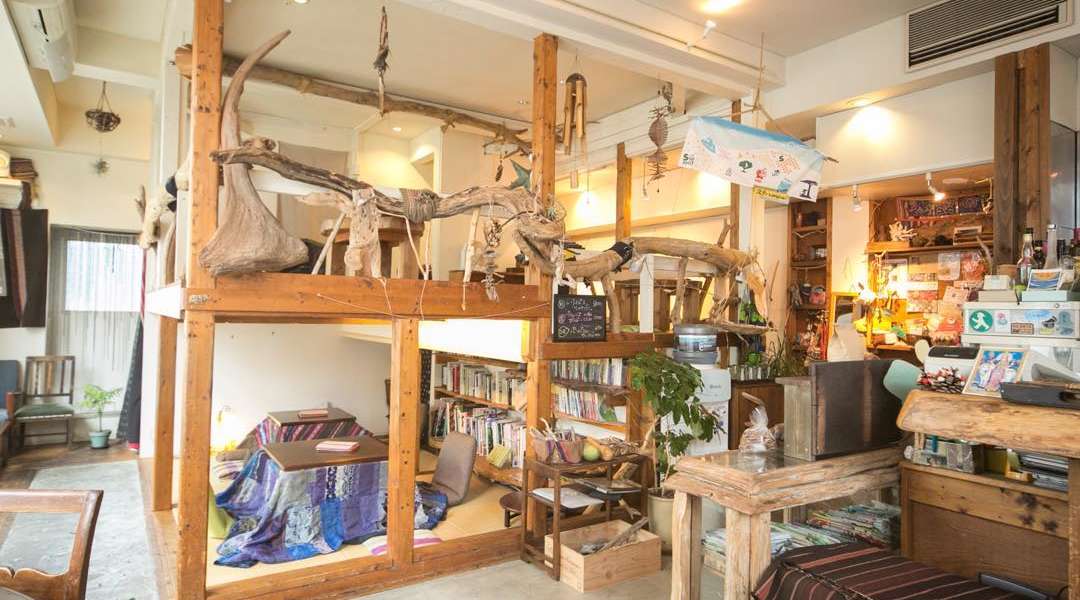
It should come as no surprise that one of the best and easiest ways to get a dose of cosy is by visiting a kotatsu cafe! Japan's cafe game is very strong, with a real variety out there to choose from, but the Cafe Stay Happy in Tokyo's trendy Shimokitazawa district is a clear favourite for locals and visitors alike. Decked out with rustic furniture and trinkets from travels across the world, it's an homage to escaping into the great outdoors - and all within the buzzy sidestreets of Tokyo's hipster hood. The piece de resistance? The kotatsu tables, of course, which allow guests to either peruse the shelves of the library and snuggle down to plan their next trip or hunker down by the 3rd story window and people-watch the world go by - all while enjoying their delicious menu of Japanese soul food and mouth-watering cakes.
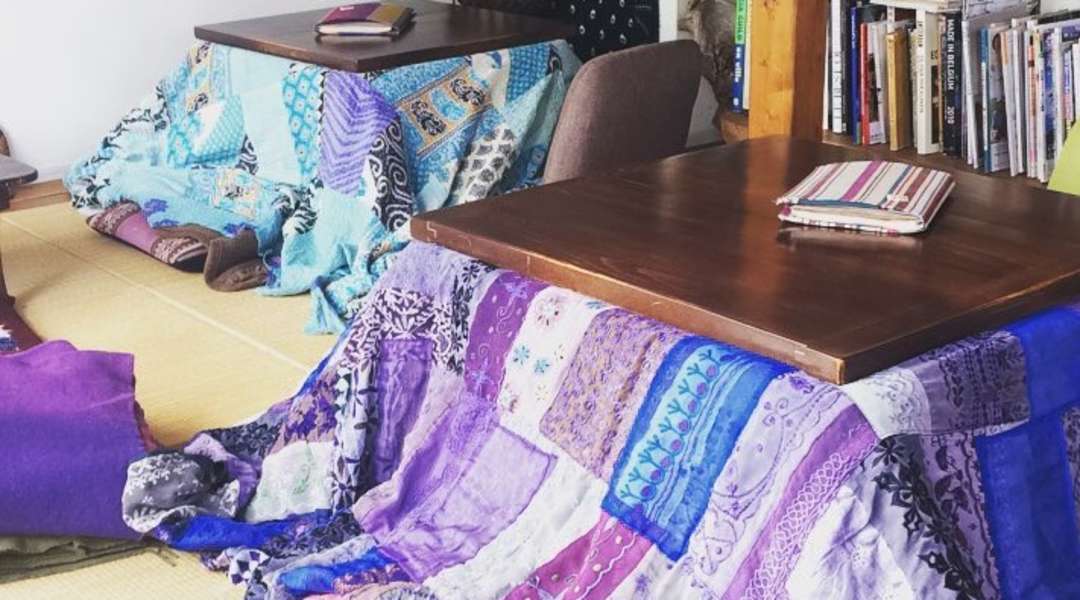
Still not satisfied? The Bane Bagus Akasaka Mitsuke around Tokyo station area has a more up-market kotatsu veranda with a virtual golfing range to boot, and the Honke Kanoya Kagoshima has a roof top bar and a more intimate kotatsu room inside for all the sake lovers out there.
And that's just the tip of the iceberg!
For all the kotatsu antics that you can shake a stick at and more, book yourself a trip an autumn or winter trip to Japan and experience it for yourself.

















































